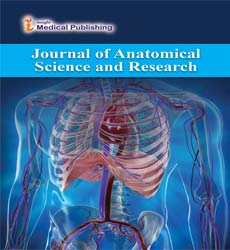Non-Invasive Neuroimaging Techniques
Takshi Yumi*
Department of Neurology, the University of Tokyo, Tokyo, Japan
- *Corresponding Author:
- Takshi Yumi
Department of Neurology,
The University of Tokyo,
Tokyo,
Japan,
Tel: 22369981598;
E-mail: tkyumi@gmail.com
Received Date: November 25, 2021; Accepted Date: December 09, 2021; Published Date: December 16, 2021
Citation: Yumi T (2021) Non-Invasive Neuroimaging Techniques. J Anat Sci Res Vol.4 No.6:002.
Description
Brain disorders sorely affect life quality. Therefore, noninvasive neuroimaging has received attention to observing and quick diagnosing neural ailments to inhibit their development to a severe level. Present MRI and PET/CT techniques advanced for non-invasive neuroimaging and the future direction of optical imaging techniques to reach higher resolution and specificity using the second near-infrared (NIR-II) region of wavelength by biological molecules.
Neuroimaging falls into two extensive categories
• Structural imaging, which deals with the structure of the brain and the diagnosis of large-scale intracranial ailment (such as a tumor), as well as damage.
• Functional imaging, which is used to diagnose metabolic ailments and lesions on a finer scale (such as Alzheimer’s disease), and also for neurological and cognitive-psychology research. Functional imaging permits the brain’s information processing to be visualized directly, because activity in the intricate region of the brain raises metabolism and “lights up” on the scan.
Progressive non-invasive neuroimaging techniques such as EEG and fMRI allow researchers to directly detect brain activities while subjects perform numerous perceptual, motor, and/or cognitive tasks. By amalgamating functional brain imaging with sophisticated investigational designs and data analysis procedures, functions of brain areas and their interactions can be observed. A nascent field called neuroeconomics has recently emerged as a result of the enormous success of applications of functional brain imaging techniques in the study of human decision-making. MRI has become an essential tool for researchers and veterinarians to guide developments in surgical processes and implants and thus, experimental as well as clinical outcomes, given that access to MRI also permits for better diagnosis and monitoring for brain ailment.
Frequently used brain imaging techniques are
Electroencephalography: EEG is used to display brain activity in definite psychological states, such as alertness or drowsiness.
It is suitable in the diagnosing brain disorders, especially epilepsy or another seizure disorder. An EEG might also be helpful for diagnosing or treating the following disorders:
• Brain tumor
• Brain impairment from head injury
• Brain dysfunction that can have a variety of causes (encephalopathy)
Positron Emission Tomography (PET): A positron emission tomography (PET) scan is an imaging test that can help disclose the metabolic or biochemical function of the tissues and organs. As part of the scan, a tracer substance attached to radioactive isotopes is inoculated into the blood. When parts of the brain become active, blood (which contains the tracer) is sent to transport oxygen. This creates visible spots, which are then picked up by detectors and used to create a video image of the brain while performing a specific task. However, with PET scans, we can only find generalized regions of brain activity and not particular areas.
Magnetic Resonance Imaging (MRI): MRI is a non-invasive imaging technology that creates three dimensional detailed anatomical images. It is frequently used for ailment detection, diagnosis, and treatment monitoring. It is based on sophisticated technology that excites and identifies the change in the direction of the rotational axis of protons found in the water that makes up living tissues. An MRI uses strong magnetic fields to align spinning atomic nuclei (usually hydrogen protons) within body tissues, then interrupts the axis of rotation of these nuclei and detects the radio frequency signal generated as the nuclei return to their baseline status. Through this procedure, an MRI produces an image of the brain structure. MRI scans are noninvasive, pose little health risk, and can be used on infants and in utero, providing a consistent mode of imaging across the improvement spectrum.
Open Access Journals
- Aquaculture & Veterinary Science
- Chemistry & Chemical Sciences
- Clinical Sciences
- Engineering
- General Science
- Genetics & Molecular Biology
- Health Care & Nursing
- Immunology & Microbiology
- Materials Science
- Mathematics & Physics
- Medical Sciences
- Neurology & Psychiatry
- Oncology & Cancer Science
- Pharmaceutical Sciences
